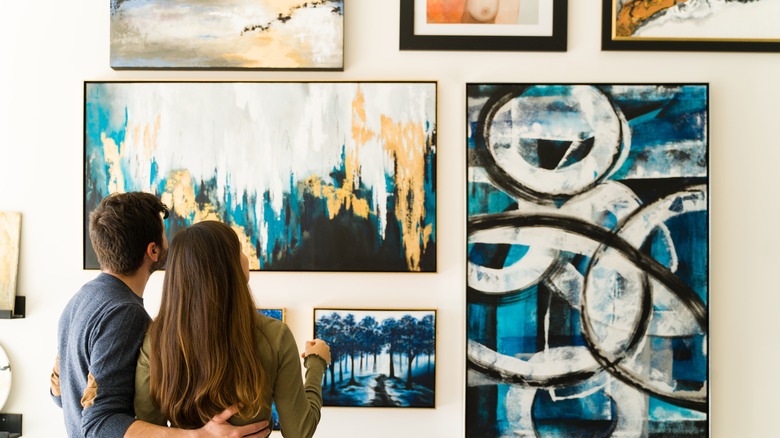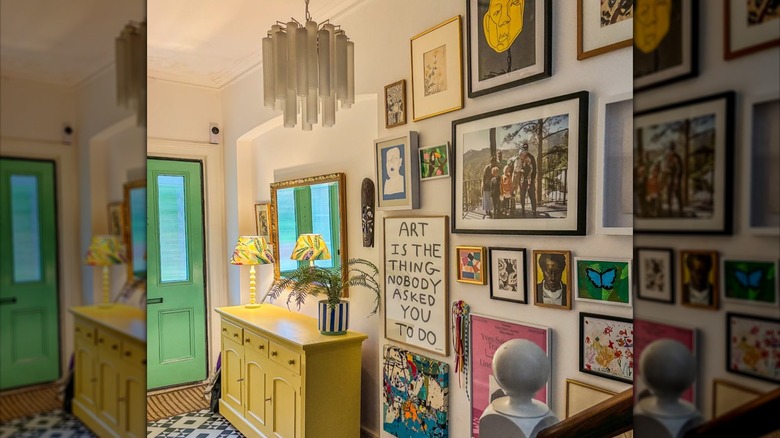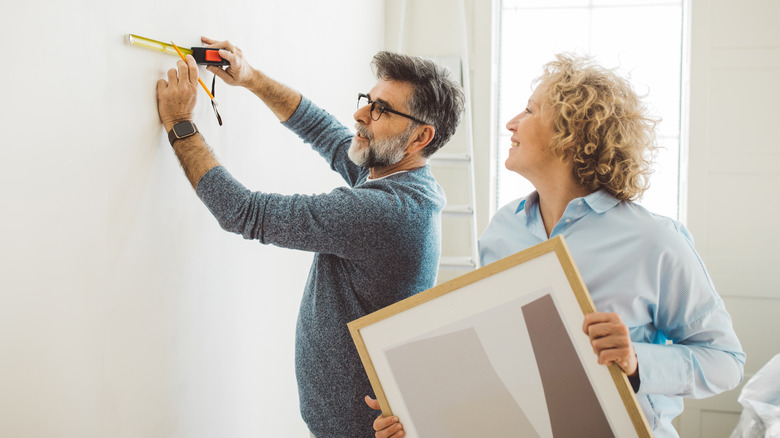Common Misconceptions You May Have About DIY Gallery Walls
Wondering how to create the perfect gallery wall? The answer might hang on what you should not be doing. Like fashion, interior design is constantly evolving. Gallery walls came to be in the 1600s and enjoyed a resurgence in popularity at the start of the 2010s. With so many staring at the walls of their home during the pandemic while working, schooling, and waiting to rejoin the real world, the gallery wall's rules were rearranged again, this time often shared instantly in minutes-long clips on social media. Now, when it comes to curating these at-home exhibition spaces, there are common misconceptions you may have about DIY gallery walls. These include that themes are necessary, frames should match, it must be completed all at once, media shouldn't mix, and measurements don't matter.
If you decide to tweak your gallery wall, consider some advice from experienced home decorators: don't be afraid of nailing into the wall. The fear of beginning this project could lead you to never create your gallery wall in the first place. Remember that you can always pull out the nails if you're not happy and make adjustments. Some point out that it might take only seconds to repair a hole. Patch kits will help fill an imperfection and are available for drywall and concrete. Use them in conjunction with touch-up paint pens to cover any mistakes. If small enough, the best method for repairing a hole in your wall is simply filling it with white toothpaste. Now, let's dive into these common misconceptions about gallery walls.
Misconception: Themes are necessary
While creating a gallery based on a specific theme may appeal to someone with a deep and passionate obsession such as the beach or their family (and that's okay!), blending subject matter is encouraged. This will add more drama to the wall because viewers will be surprised by what they didn't expect to see. It will also better reflect who you are, since each piece of art will speak to your interests and say something about your past. Combining new works with pieces from the past will help you along, as will mixing newly-acquired art with some that's been handed down.
Misconception: Frames need to match
It's natural to think that framing all the artwork in the same frames will add a certain polish to the gallery wall. Not so, advises home designers. Consider using frames of different colors. But if you feel strongly about using one color for the frames — black, brown, and gold are quite popular, for instance — go for different shades of the color and use frames in varying materials and styles. If you want only black, frame some in metal and some in wood. This will add extra texture and interest to the space.
Misconception: It must all be completed at once
Meticulously mapping out your gallery wall will bring good results. But don't rush the process, design experts say. Take your time, even if it takes a year or longer to complete the project. Instead of hanging art in frames, start by living with paper that's cut out in the size of each piece and taped to the wall. You can also start hanging art even if there aren't enough pieces to fill the whole wall. This will leave empty space for additions that speak to you when the time is right and you've found works you love.
Misconception: Media shouldn't mix
Loosened expectations about what should or should not go on a gallery wall will help you think about what to display that's not necessarily a painting, photograph, drawing, or anything else that's two-dimensional. Any items can be hung among framed works. You can choose objects that can fit in odd spaces between frames. Some nontraditional ideas to consider include pennants, mirrors, bud vases, baskets, woven items, and shadow boxes. The best advice? Don't be afraid to go 3D with your gallery wall. Items with strong or unusual textures can also be stylish additions.
Misconception: Measurements don't matter
While many believe in mapping out a gallery wall, others prefer for a space to come together organically. However, no matter what you prefer, always consider the measurements, because they do matter. When hanging a gallery wall above a sofa, you don't want anyone sitting there to hit a piece, causing it to fall, break, and possibly injure someone. Try to leave at least a foot between the top of the seating and the bottom of the artwork. For a put-together look, make sure the works are at least 2 or 3 inches apart, and be as consistent as you can.


